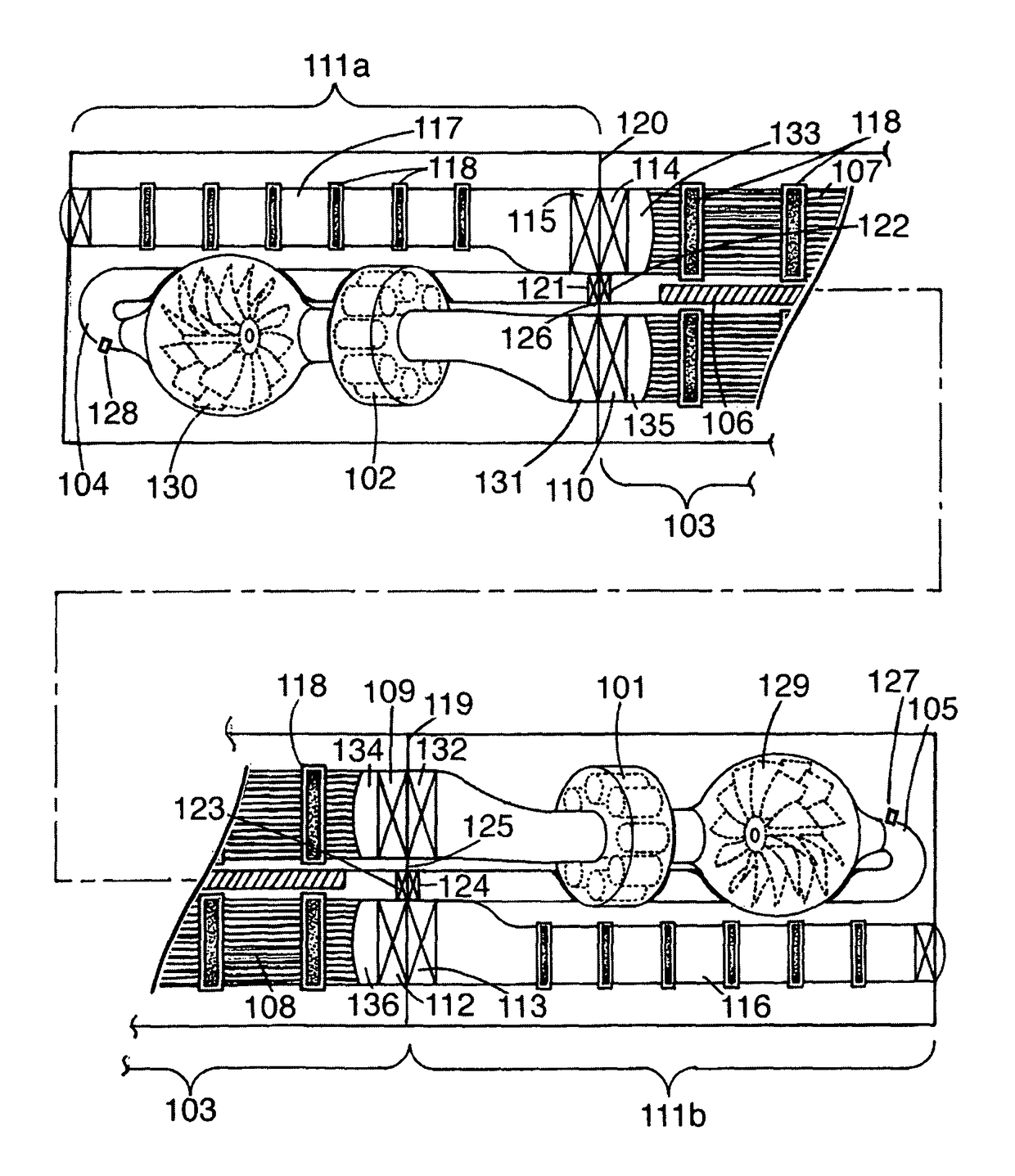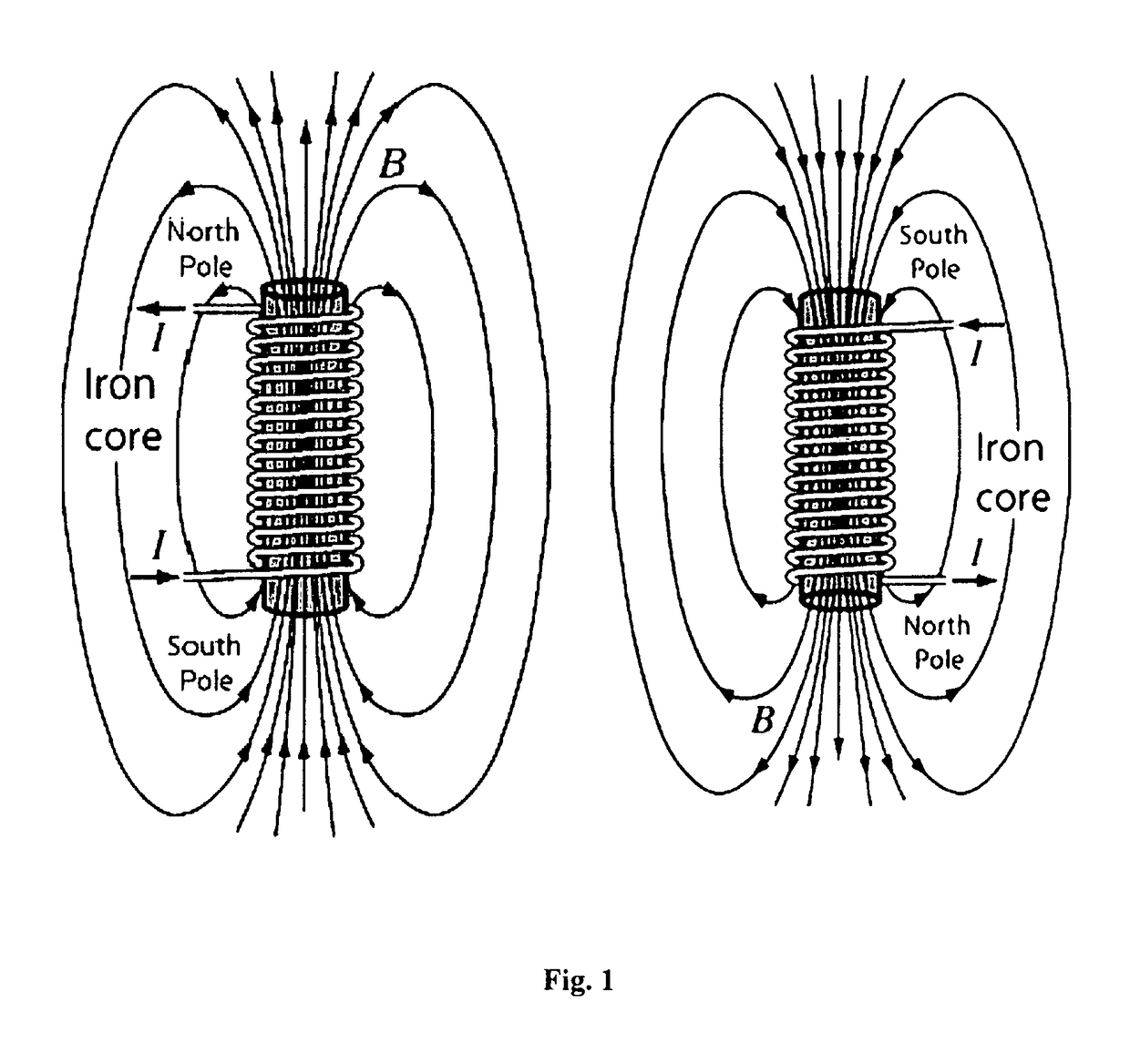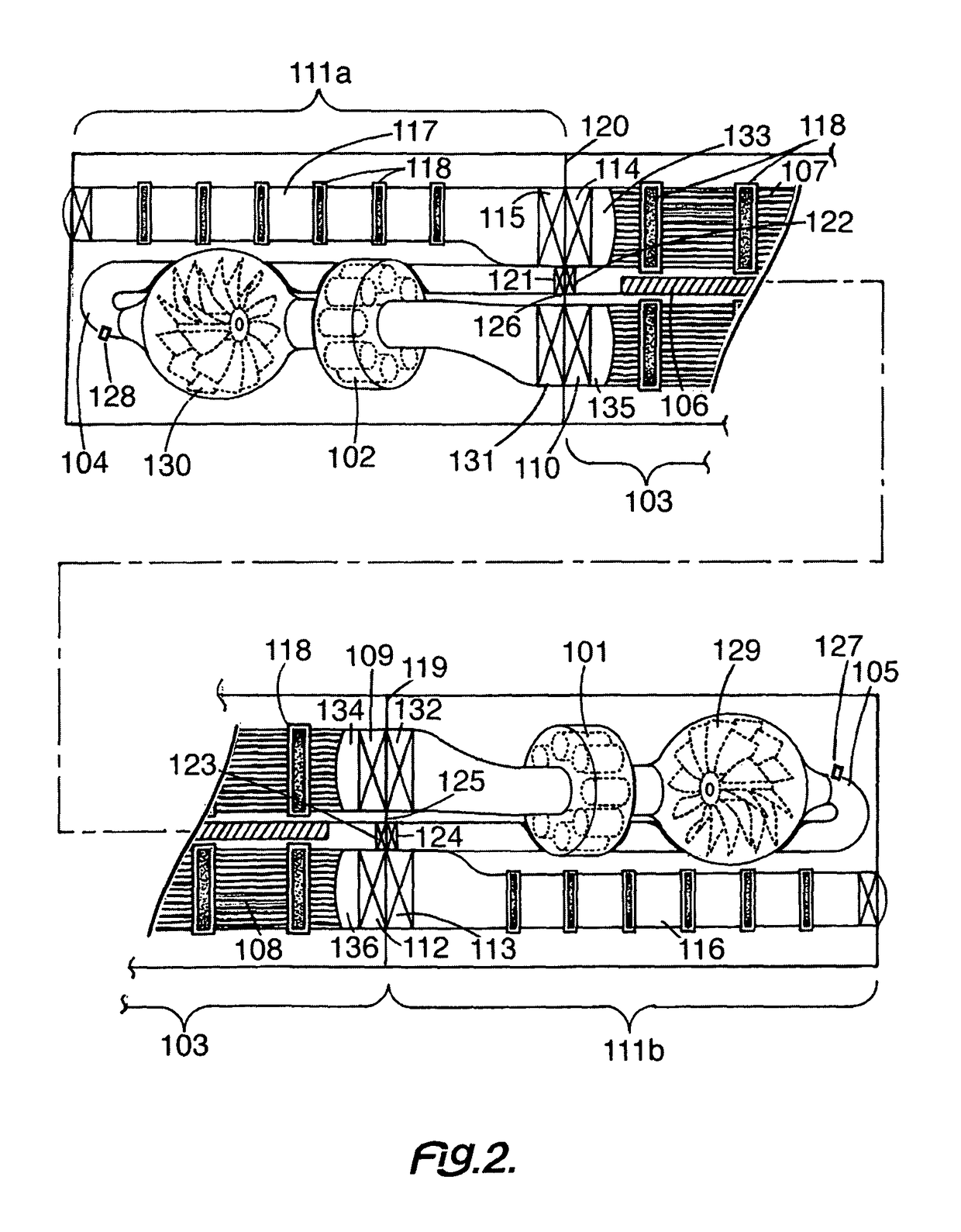Pro unit to continuously recharge the battery of an electric conveyance
a technology of electric vehicles and pro units, which is applied in the direction of electric generators, machines/engines, transportation and packaging, etc., can solve the problems of preventing or inhibiting market acceptance, long time required for recharging the vehicle's battery, etc., to increase the market acceptability of electric vehicles, prevent or inhibit market acceptance, and limit public acceptance and ev market penetration.
- Summary
- Abstract
- Description
- Claims
- Application Information
AI Technical Summary
Benefits of technology
Problems solved by technology
Method used
Image
Examples
Embodiment Construction
[0040]FIG. 2 and FIG. 3 each show a PRO cell for use with a vehicle with a battery / frame chassis, such as a Tesla® Model S. Each PRO cell consists of a water-tight center-section 103 containing two hollow fiber membrane bundles 107 and 108. On either side of the water-tight center-section are identical end caps 111a and 111b. Each membrane bundle is adjacent to an end cap and connected to a ferrofluid isolation tube 116 and 117, and an end cap with a solenoid-type permanent magnet assemblies, 101 and 102, a series of hydroturbines 129 and 130, and a turn-around tube, 104 and 105. Thereby each membrane bundle within the water-tight enclosure is adjacent to an end cap connected to an isolation tube at one end, and an end cap with a series of hydroturbines, a permanent magnet and a turn-around tube within the end cap on the other end. The water-filled center section can be approximately 3½ to 3¾ feet long and the end caps could be 4 to 6 inch long.
[0041]Each membrane bundle in the cent...
PUM
| Property | Measurement | Unit |
|---|---|---|
| temperature | aaaaa | aaaaa |
| temperature | aaaaa | aaaaa |
| commute distance | aaaaa | aaaaa |
Abstract
Description
Claims
Application Information
 Login to View More
Login to View More - R&D
- Intellectual Property
- Life Sciences
- Materials
- Tech Scout
- Unparalleled Data Quality
- Higher Quality Content
- 60% Fewer Hallucinations
Browse by: Latest US Patents, China's latest patents, Technical Efficacy Thesaurus, Application Domain, Technology Topic, Popular Technical Reports.
© 2025 PatSnap. All rights reserved.Legal|Privacy policy|Modern Slavery Act Transparency Statement|Sitemap|About US| Contact US: help@patsnap.com



